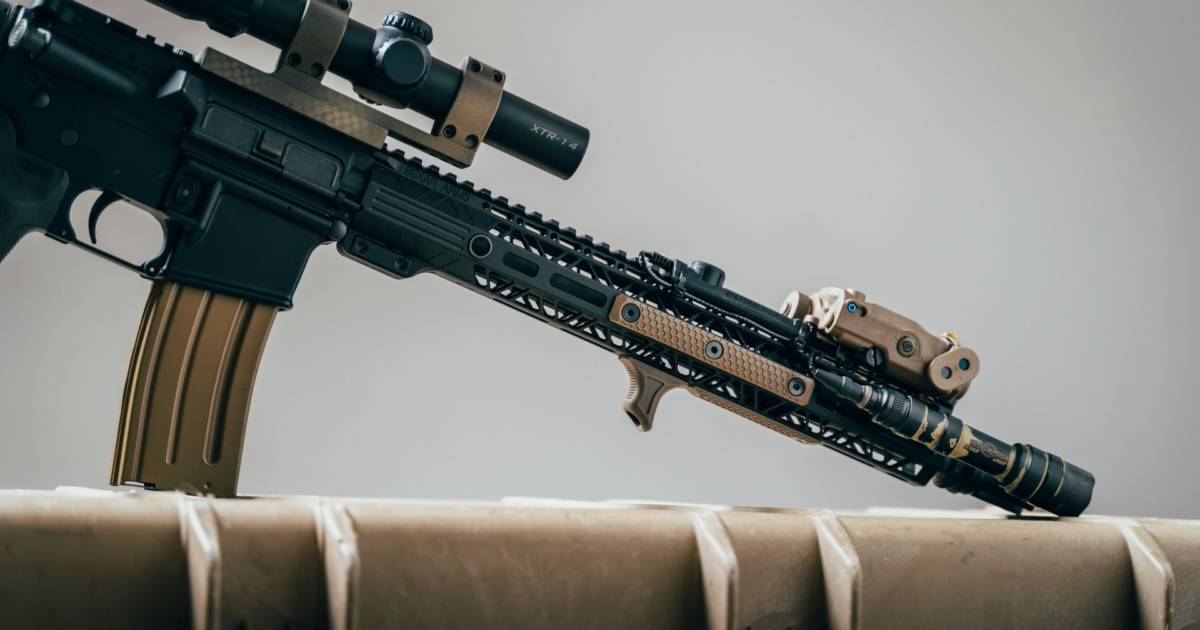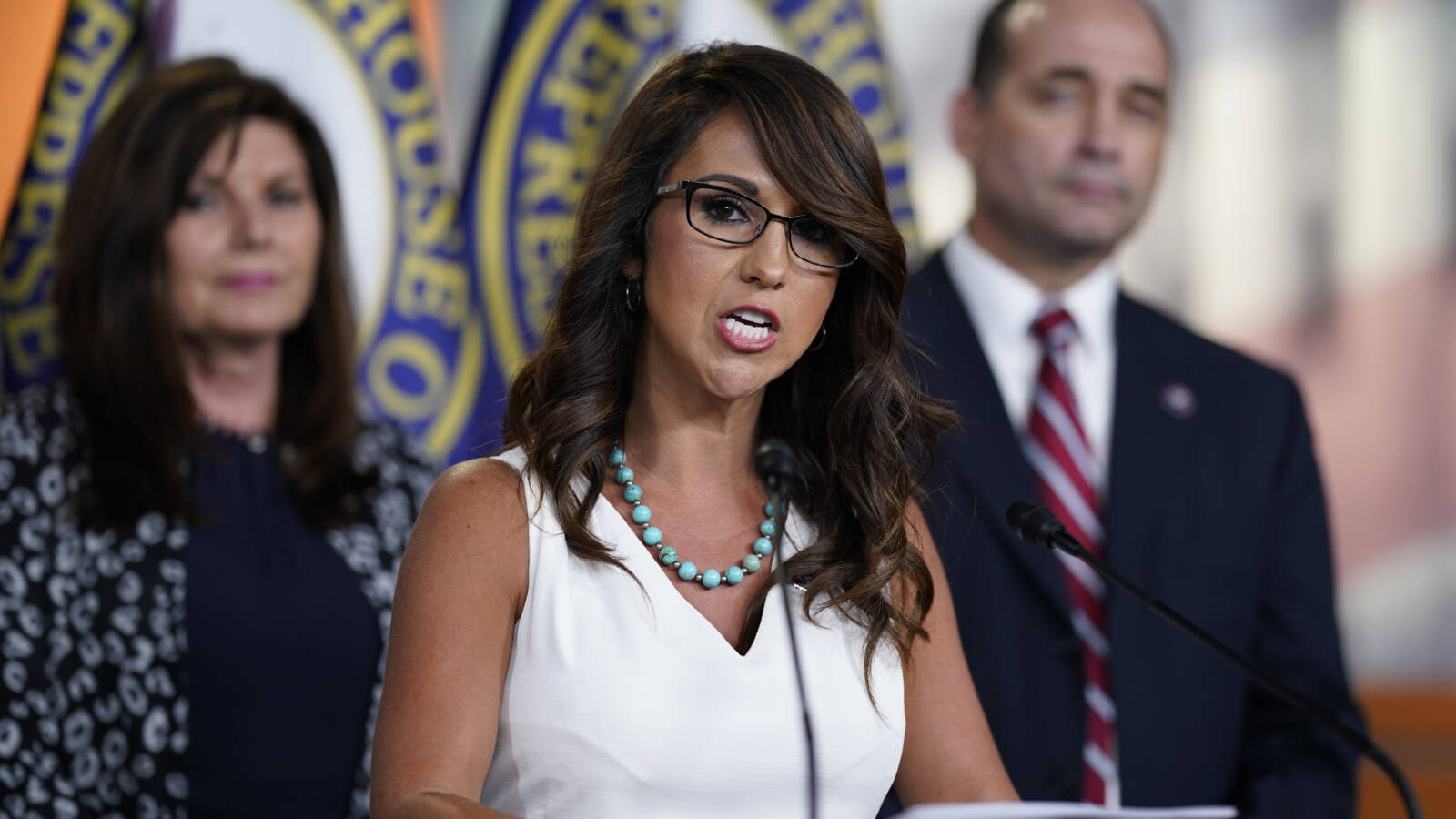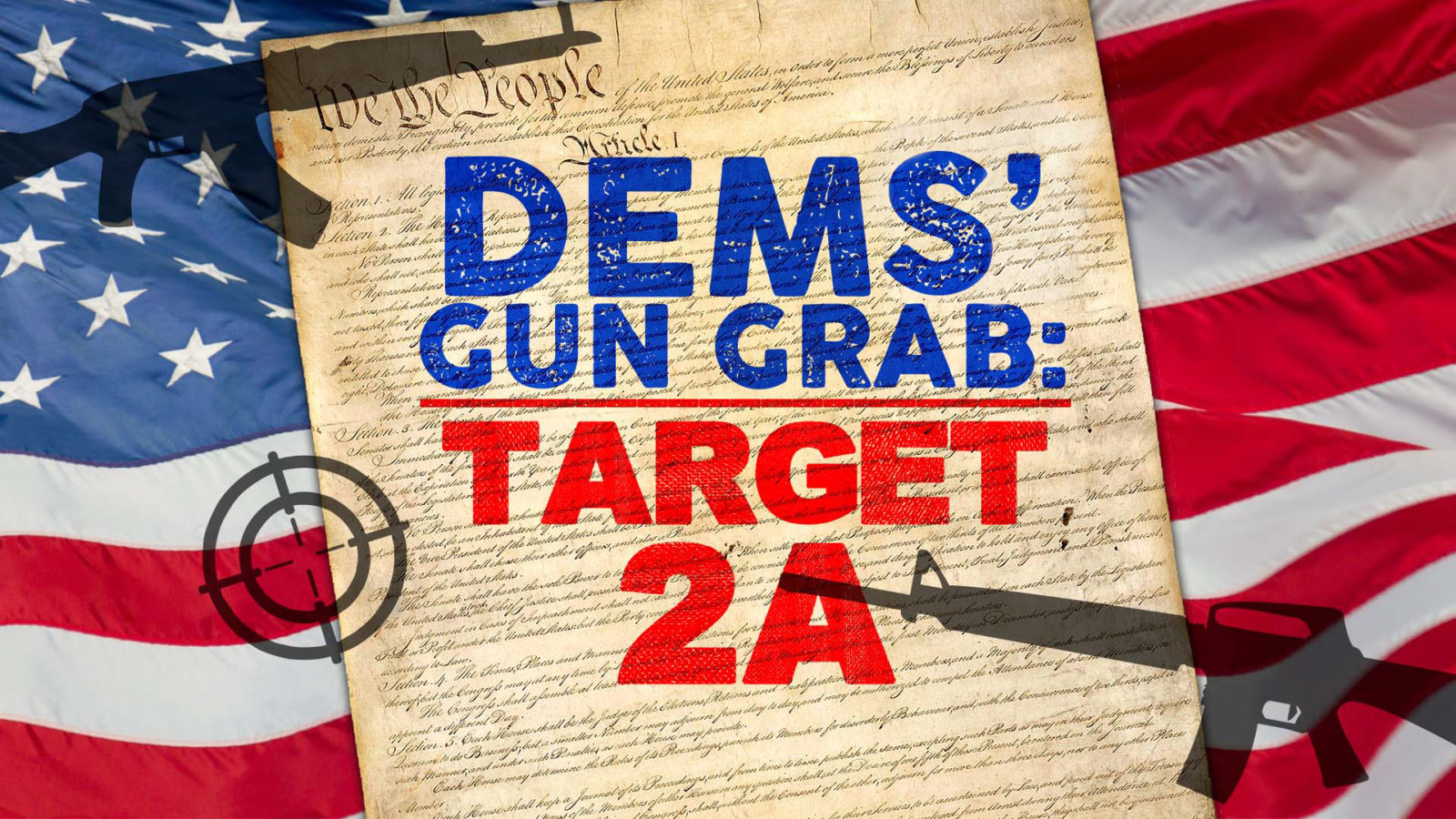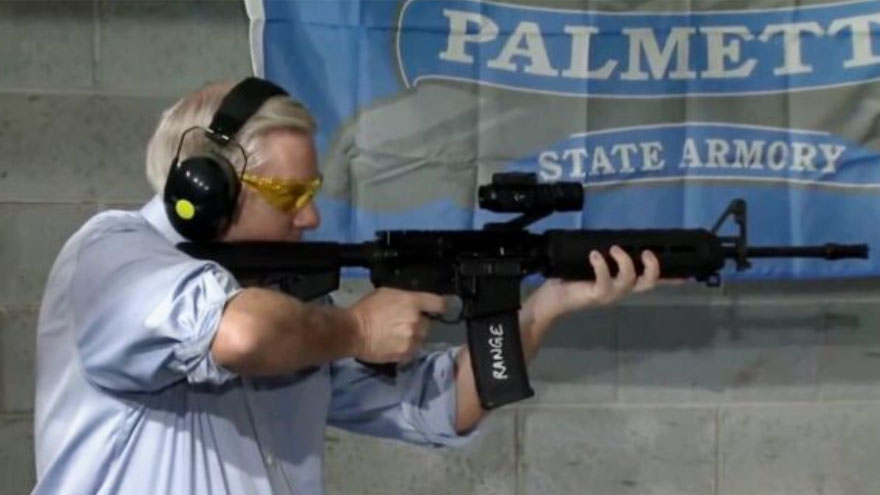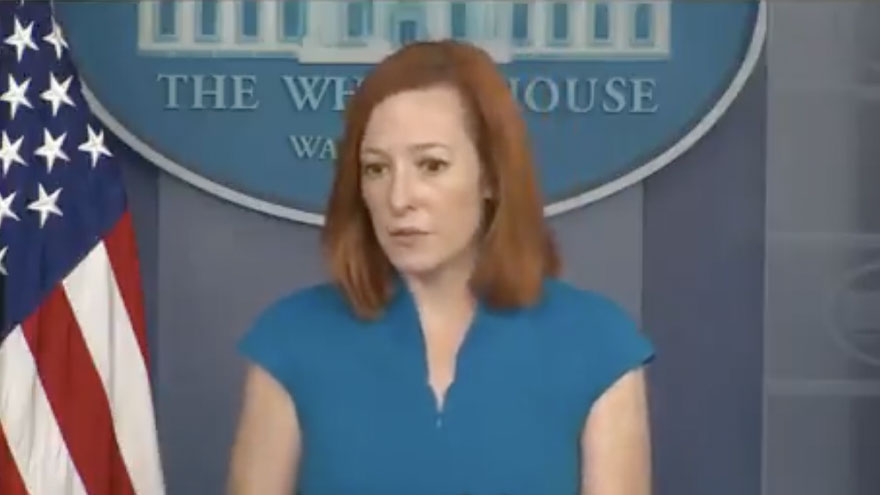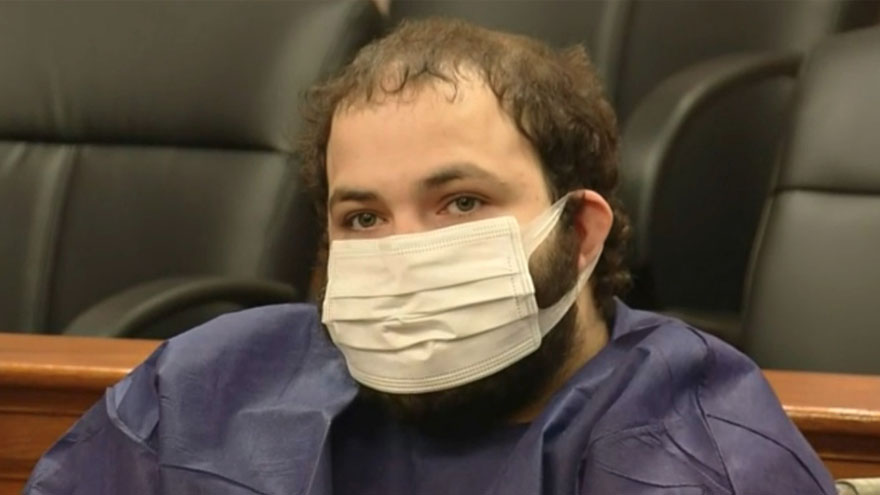The twin rampage massacres over the past week have led to a predictable call for new gun control. The facts were not all in before new gun control proposals were trotted out. In many cases, the proposed laws are the same one-size-fits-all solutions that come up after every mass killing, but which are unlikely to have an impact on spree killings.
One of these is a ban on AR-15s specifically or “assault weapons” in general. I was recently contacted by an irate reader who said that “assault weapons” was a nonsensical term. She was wrong. The term “assault weapon” is not a term of art in the firearms community, but it is a legal term.
My college professors stressed that the definition of a word in the law or a contract is whatever it says in the law or contract. If you want to know what your auto policy means when it says “personal auto,” look in the section of the policy, a legal contract, that gives the definition of the term. Whatever it says, goes. Likewise, if a statute defines a “grilled cheese sandwich” as an “assault weapon” then that would be legally binding even though it would be nonsensical in terms of firearms. It doesn’t matter if your sammie isn’t painted black, lacks a high-capacity magazine, and is incapable of spraying long bursts of cheese with a single trigger pull.
There’s a myth that “assault weapons” are used in all rampage killings, but that’s not true. To debunk this myth, we need look no further than last week’s Atlanta spa murders where the culprit reportedly used a “9mm firearm” per the Atlanta Journal-Constitution. A firearm of this caliber is almost certainly a semi-automatic (one shot per trigger pull) pistol and would not be considered an “assault weapon” under most definitions (but read the bill!).
A 2014 study of 142 mass shootings by Dr. James Fox of Northeastern University found that the “assault weapons” ban in the 1990s had little effect on mass shootings. The doctor found that semi-automatic pistols were by far the most common weapon used in mass shootings. A graph from Statista shows that even when more recent incidents are considered, pistols are far more prevalent in mass shootings than rifles. Among the high-profile mass killings that did not use rifles, let alone “assault weapons,” were the attacks at Virginia Tech and the Washington Navy Yard.
Finally, the AR-15 is not uniquely dangerous. Other hunting rifles use similar or more powerful ammunition, have similar magazine capacities, and rates of fire. The AR-15 is not a “machine gun” but a semi-automatic rifle that fires one bullet for one pull of the trigger.
Neither is the US unique in suffering spree murders. In fact, only two of the top ten mass shootings in the world occurred in the US. Those were the 2017 Las Vegas attack and the Orlando nightclub shooting in 2016.
Mass murders by government troops are not included on the list by the way. To kill in truly large numbers requires an army. The complete top ten list would include the numerous massacres by Nazi troops, the Soviet massacre of 22,000 Poles at Katyn in 1940, the Turkish massacre of a million Armenians from 1915 through 1917, the murder of 800,000 minority Tutsis in Rwanda in 1994, and the Srebrenica massacre of 8,000 Muslim men and boys in Bosnia in 1995.
We also know that gun control has little effect on spree killings or crime rates in general. The Everytown map of mass shootings over the past 10 years shows incidents in nearly every state regardless of how strict gun control laws are. At first glance, there seems to be a stronger correlation with population density than with gun control.
Likewise, expanded background checks would not prevent mass murders for the large number of spree killers who don’t have prior criminal records. So far, that seems to include the perpetrators of both the Atlanta spa and the King Soopers murders.
Okay, you may argue, let’s just ban guns. This is a nonstarter because the Supreme Court has held that the Second Amendment constitutes an individual right to keep and bear arms. While constitutional rights are not unlimited, a total ban on gun ownership is clearly unconstitutional.
Even if such a plan was constitutional, it would be unworkable. Axios estimated in 2019 that the US has more than 270 million guns. Of these, the Trace estimates that 15 to 20 million are “modern sporting rifles” that might be defined as “assault weapons.”
There are two important takeaways from these statistics. The first is that if all or most of these guns were used in crimes, there would be no Americans left in short order. In that context, it’s easy to see that most American guns are kept by law-abiding citizens.
Second, an attempt at gun banning and confiscation would turn most of these law-abiding citizens into criminals overnight. It would be a gross misallocation of law enforcement resources to have officers spending their time trying to track down guns that are not being used in crimes. (And that assumes that law enforcement would comply with such orders themselves. Many sheriffs would not and openly say so.)
In my view, the concept of mass gun confiscations is a liberal pipe dream similar to the right-wing fantasy of mass deportations of illegal aliens. In both cases, the numbers are so large and the majority so harmless to society that neither will ever happen. Putting either plan into practice would require a large expansion of the police state that the majority of the country would not stand for. The exorbitant cost would outweigh any societal gains.
Even if we stopped producing and importing guns today, there are so many guns in the US already that they would be present for decades to come. And that’s assuming that new guns were not smuggled into the country for use by criminals. If we can’t stop the importation of illegal drugs, we probably can’t stop illegal guns either. We can only disarm those who choose to obey gun ban laws.
So what’s the solution? I don’t think that there is a single solution to the problem, but there are ways to minimize the risk of future mass murders without infringing upon the rights of nonhomicidal, law-abiding gun owners. One of these is simply to have more security. Use metal detectors and security guards to warn of and defend against would-be murderers as well as garden variety robbers.
Second, encourage gun owners to get training and carry permits. Several spree killings have been stopped by armed civilians. The only way to stop a bad guy with a gun is a good guy with a gun. The good guy can be a police officer, but it could also be an armed good Samaritan.
Finally, there are some gun control ideas that may be effective without infringing on Second Amendment rights. As far back as 2013, I noticed that many spree killers had mental illness in common. If we want to stop a large number of mass shootings we can act to get guns out of the hands of the potentially violent mentally ill. The idea of red flag laws has strong bipartisan support including 70 percent of Republicans and 67 percent of gun owners in a 2019 poll. These laws would need to be carefully written to avoid abuse and allow for a robust appeals process by the gun owner.
An additional idea is to incorporate mental health data into background checks. Marriage counseling and similar situations should not trigger flags on gun purchases but suicidal or homicidal behavior, diagnoses of dangerous illnesses, and the use of psychotropic drugs should, at least on a temporary basis until the problem is resolved.
Other reforms that don’t involve guns directly would include changing HIPAA laws to allow doctors to share relevant information with law enforcement and giving involuntary commitment laws more teeth. If mental patients need medication to function peacefully in society, they should be required to stay under a doctor’s care and stay on their meds. Studies show that stopping mental health medications abruptly can be very dangerous.
There are indications of pre-existing mental problems at least in the case of the King Soopers shooting. However, at this point, it’s difficult to say whether red flag laws would have prevented either shooting spree. As I said before, there is no single magic policy to solve the problem.
I’m a gun owner. I own an AR-15 and a variety of other weapons. I want to ensure that I can keep my gun collection and that my children will be able to enjoy their Second Amendment rights in the future. To that end, we need to address the problem of spree murders, but we need to do it with effective solutions that protect the rights of responsible gun owners. When rights are not exercised responsibly, they invite more regulation. For that reason, it is in the interests of gun owners to keep guns out of the hands of criminals and the mentally ill.
___
Myths about mass shootings are not the sole province of the left. I’ve seen several people in the past few days posting about how there were few, if any, mass shootings under the Trump Administration and suggesting that there is some “tinfoil hat” stuff going on behind the scenes.
One of my Facebook friends, a gentleman that I used to go to church with, even mused, “Can’t help but believe someone or some agency are using mind control over some weak-minded individuals.”
If that sounds crazy, it’s because it is. Such a scenario was actually the plot of a memorable “X-Files” episode that featured William Sanderson, better known as “Larry” from “Newhart.”
The claim is also demonstrably wrong. The Northeastern University crime database showed that 2019 was the deadliest year on record for mass killings, defined as “four or more people being killed in the same incident, excluding the perpetrator.” There were 41 mass killings in the US that year, 33 of which involved the use of firearms.
If we limit the scope to mass shootings, there were still a plethora during the Trump Administration. A compilation on Wikipedia shows at least 64 mass shootings in the United States while Donald Trump was president (although this list seems to use a slightly different definition than the Northeastern database).
Not all of these were high-profile murders. Many were more aptly described as domestic or workplace violence rather than spree killings, but the list includes many incidents that should be easy to recall. A partial list of high-profile shootings from the Trump era includes:
- Milwaukee brewery shooting on February 26, 2020
- Naval Air Station Pensacola shooting on December 6, 2019
- Dayton bar district shooting on August 4, 2019
- El Paso Walmart shooting on August 3, 2019
- Virginia Beach municipal building shooting on May 31, 2019
- Pittsburgh synagogue shooting on October 27, 2018
- Capital Gazette shooting in Annapolis Maryland on June 28, 2018
- Santa Fe, Texas high school shooting on May 18, 2018
- Parkland, Florida high school shooting on February 14, 2018
- Sutherland Springs, Texas church shooting on November 5, 2017
- Las Vegas massacre on October 1, 2017, the most deadly mass shooting in US history
Mass shootings did not stop during the Trump Administration, but interestingly they did seem to decrease in 2020. Perhaps the lockdowns and social distancing during the pandemic had the unintentional effect of reducing spree killings.
That reduction over the past year may have contributed to the misconception that mass murders were absent or rare during the Trump era. Human memories can be notoriously bad, which is both a blessing and a curse.
___
As an addendum, when I say that people need to be responsible with their guns, I am also referring to the open-carry activists who parade around with pistols on their hips and AR-15s on their backs. While this is legal in some states, it is not a good idea for several reasons.
The most obvious is that, in an era where people are already uneasy about guns and mass shootings, people who appear to be engaging in combat cosplay can have a negative effect on Second Amendment rights. If you tend to carry your rifle grocery shopping or to get a fast-food hamburger, you may be influencing voters to vote for candidates who will enact more strict carry laws.
Second, if your gun is on display, you are a target. You should be prepared to fight to retain your weapon from an attacker. I’m certain that most people who open-carry give this little or no thought.
About ten percent of police officers who are murdered are shot with their own guns. If cops trained in gun retention are losing their guns to attackers, then untrained civilians are at a much higher risk of having their guns turned against them. By the same token, if an armed attacker knows that you are armed, his first move is going to be to shoot you.
If you’re going to carry a gun, the smarter option is to carry concealed. I have a carry permit (and I have had gun-retention training), and I almost always carry concealed. (I started carrying routinely after a vicious dog attacked my dogs on a walk, but that’s another story.)
As an untrained civilian, you’ll likely need the element of surprise if you need to use your gun. Concealment and keeping a low profile will aid your chances of survival if the bovine excrement happens to impact the apparatus with rotating blades.
Follow David Thornton on Twitter (@captainkudzu) and Facebook
The First TV contributor network is a place for vibrant thought and ideas. Opinions expressed here do not necessarily reflect those of The First or The First TV. We want to foster dialogue, create conversation, and debate ideas. See something you like or don’t like? Reach out to the author or to us at ideas@thefirsttv.com.

